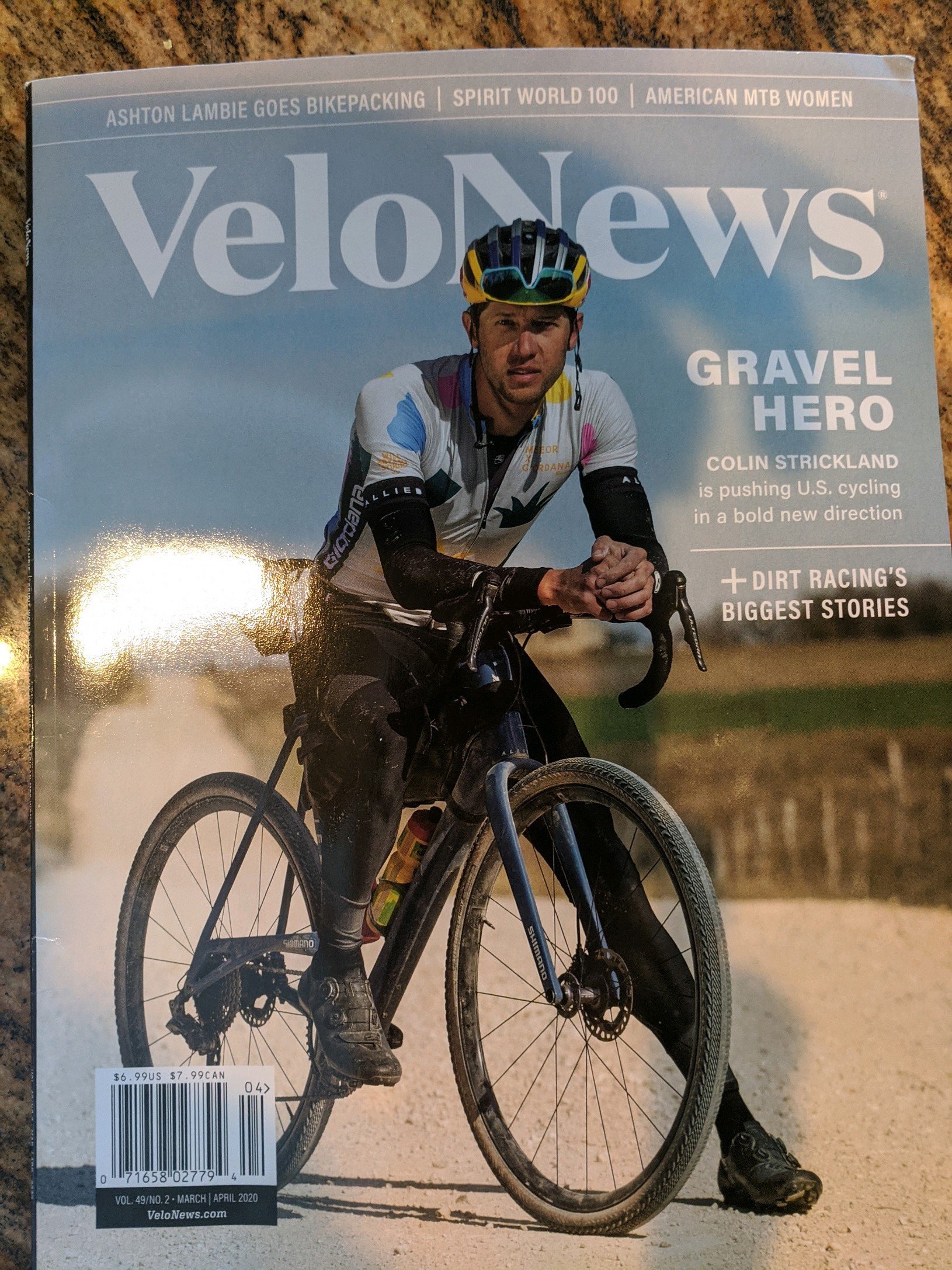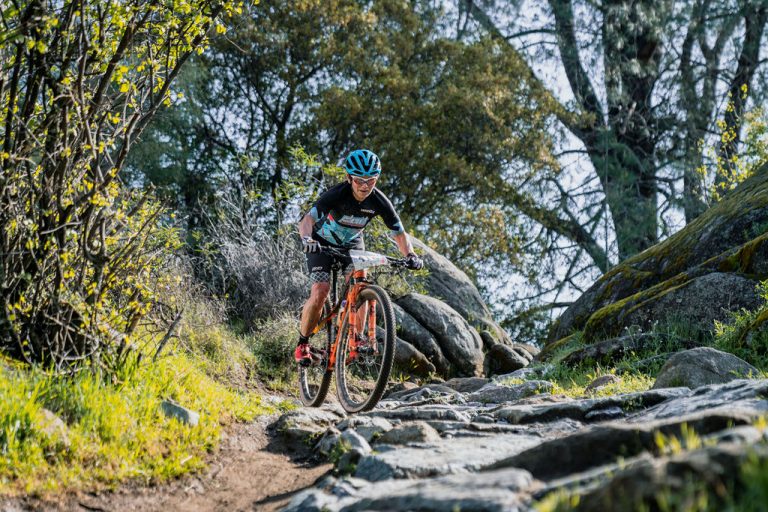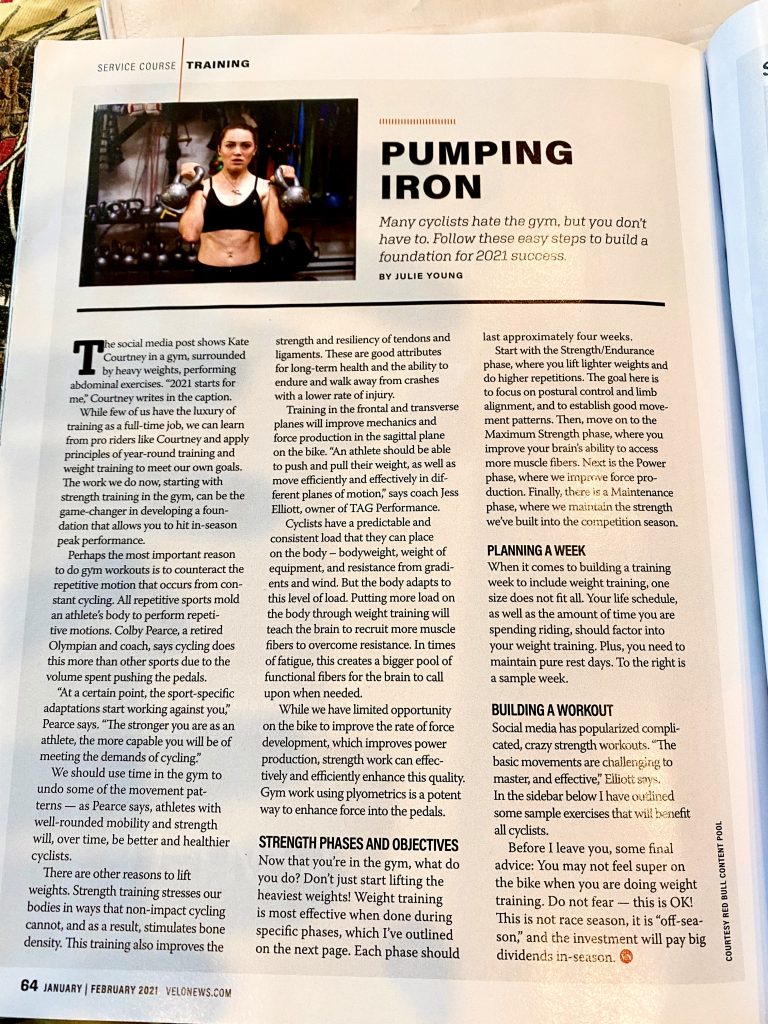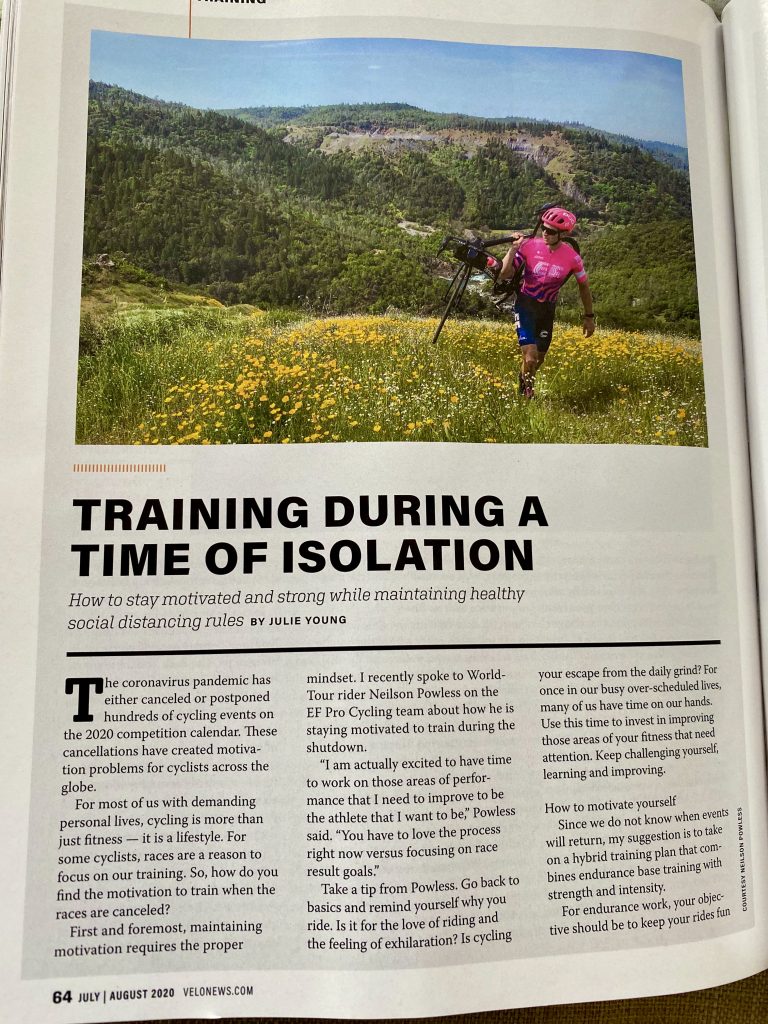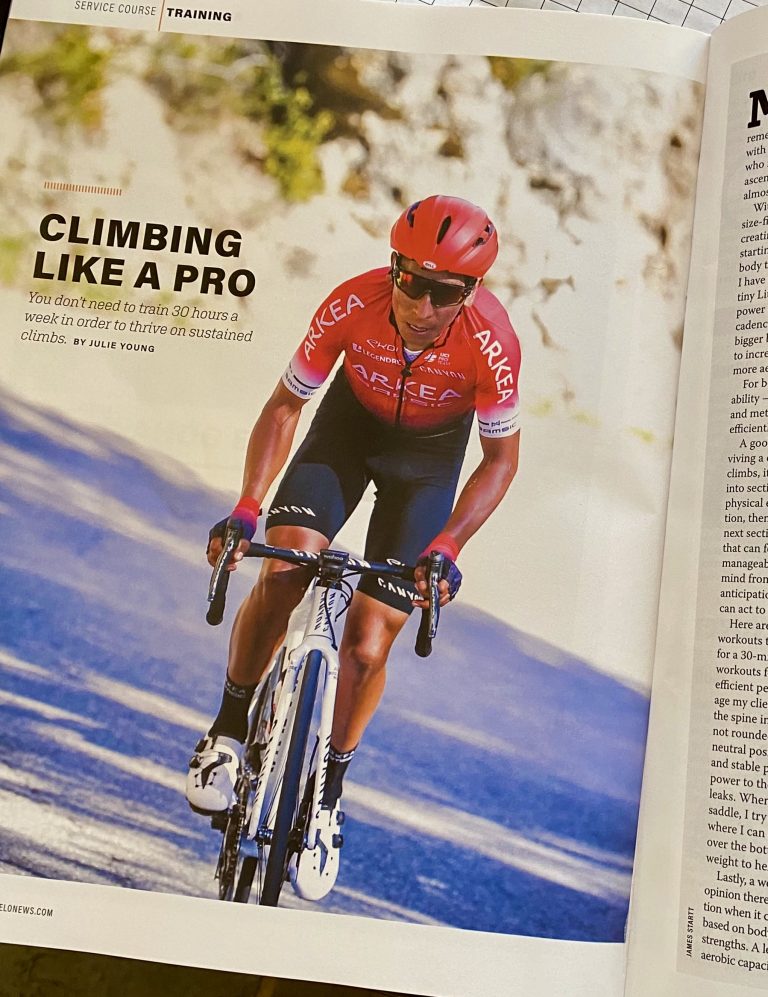Go Long in 2020 – Velo News March/April 2020
I have a client who is a husband, father, and busy professional who has completed Lost and Found twice and now has his sights on Dirty Kanza. While impressive, he is not unique. I have had an uptick in clients asking me to train them for ultras. Gravel rides, fondos and epics are growing in popularity as an alternative to road races, selling out in minutes. The motivation for clients to do these rides runs the gamut. Some want the age group win, while others are doing it to participate and finish. It seems many are drawn by the experience, sense of community and adventure as well as the opportunity to escape the daily grind. For some, there are even professional benefits. A venture capitalist friend in the Bay Area said, “Gravel riding is the new golf.”
The fitness required for these events may seem daunting and out of reach because of the distance and the fitness required to ride off road for hours in a variety of conditions. New clients are always nervous about the time commitment needed to train and the stress it can place on their personal and work life. I tell my clients, yes we can do this, but we need to follow a consistent and efficient plan that flexes to their unique schedule while also strategically fitting in the important training pieces. In my experience the key to a successful sustainable plan is understanding each client’s training time availability and staying within those time parameters to develop a plan that is effective but does not feel overwhelming or conflict with life commitments. Along the process, I emphasize with clients to remind themselves, with life goes side-ways, that something is always better than nothing and the consistent small deposits add up.
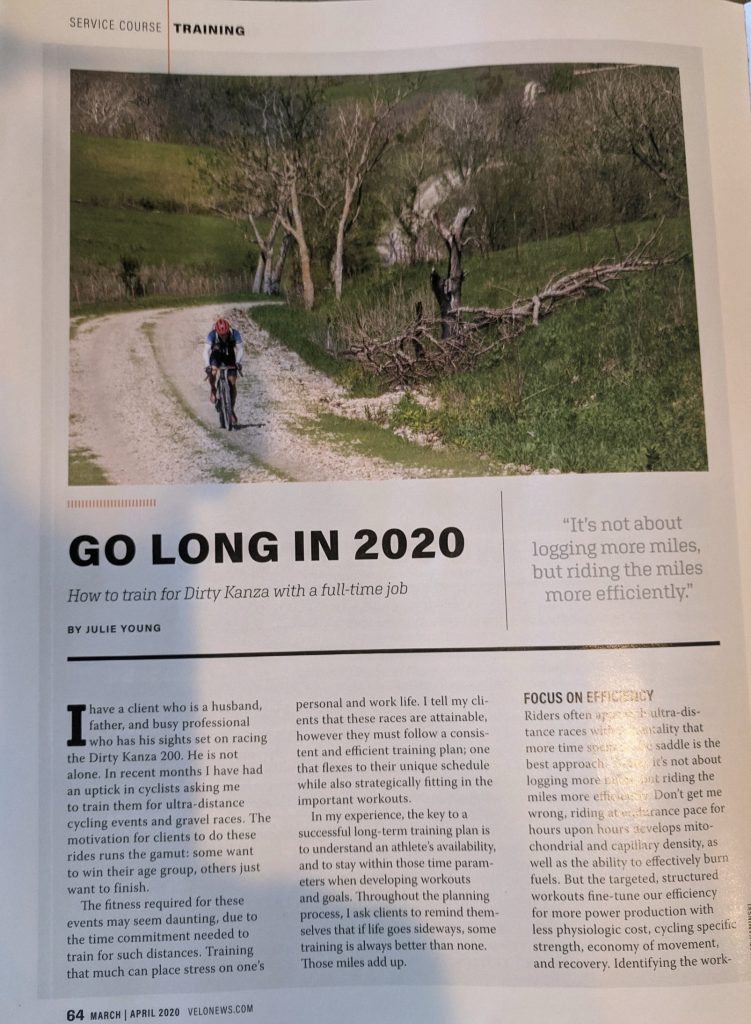
Endurance is a Game of Efficiency
Many people approach these events with a traditional time-in-the-saddle, more-is-better mentality. But to me, it’s not about logging more miles, but riding the miles more efficiently. Don’t get me wrong, time at endurance is essential and develops mitochondrial and capillary density as well as the ability to effectively burn fuels. But the targeted, structured workouts fine-tune our efficiency to produce improved power production with less physiologic cost, cycling specific strength, economy of movement, and recovery. Identifying the workouts to properly train these systems will allow you to ride faster and more efficiently with less stress on the body.
I also want to point out, that the more intense, focused workouts help facilitate mental conditioning and develop the confidence that we can contend with and pedal through the uncomfortable physical sensations. This often, overlooked ability is invaluable and the differentiator when things heat up on event day.

Why do the harder work?
While we have an obsession with power output, improved power (which has a ceiling) is an outcome of improved metabolic efficiency. The harder workouts improve our ability to metabolize, buffer and clear the lactate, pushing the lactate curve right. This effectively takes the endurance zone to the right, and as a result we ride at endurance more efficiently and with less stress.
In the gym, it’s easy to do a squat or leg curl, but we need to adapt this strength to the pedaling stroke. Cycling specific strength workouts hone the ability to time the recruitment of the right muscle at the right time around the circle.
When we ride harder, we ride better. Higher intensity structured workouts improve pedaling mechanics, equating to more power into the pedals. We also use these higher intensity workouts to re-enforce our ability to engage and maintain a neutral pelvis and spine. This provides a stable platform for the hips to more effectively drive the power into the pedal. This stable posture also ensures back health. (Side note – consistent off-bike stability work is the critical precursor here.)
Training should also be maximized for its mental conditioning. Training provides the time and place for us to get to know as many of the unknowns as possible, which effectively reduces event day anxiety. The variable intensity that characterizes cycling is one of those unknowns. We can use hard training sessions to gain confidence that we can deal with the physical sensations and pedal through uncomfortable bouts of higher intensity. During training sessions work to find mental calm and composure and focus on pedaling rhythm, fluidity and breathing. Also use training to dial in your effective self-talk and find a meaningful mental mantra to drive the physical effort. These mental focal points will support you during the event, when the intensity pitches due to terrain, winds, or “your group” decides to punch it.
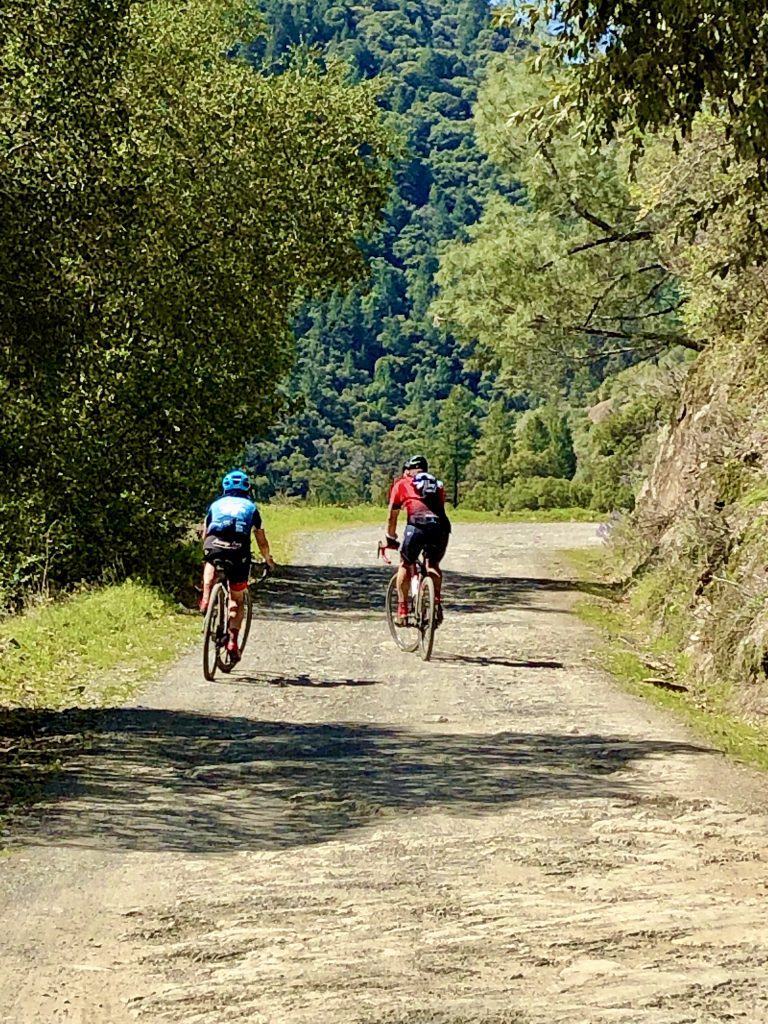
Creating a Plan
I think the copious amount of information out there can make the prospect of training feel overwhelming. For the busy professional with time constraints, I am strategic in terms of how I sequence the workouts in the week. Mid-week is dedicated to concise, higher intensity quality workouts and the weekends, longer endurance. This serves a couple of objectives. First, it emphasis quality work on more rested legs to achieve the intended objectives. Second, it results in cumulative fatigue and when we follow an endurance day after a day or two of intensity, we start our endurance day on tired legs. It is as if you are starting an endurance day with say three hours of fatigue in your legs. The key is to pedal well under the fatigue, think, “last half of your event.” A sample plan that reflects these principles might look like this:
Monday- active recovery in the form of trunk stability and yoga (resources for at-home yoga, Down Dog app; www.doyogawithme; www.glo.com)
Tuesday – warm-up with hip activation; on-bike speed and power
Wednesday – trunk stability; on-bike tempo to sub-threshold intervals, building in threshold
Thursday – endurance, time and terrain available; or specific cycling strength workout
Friday – complete rest day
Saturday – similar to Wednesday, but if Wednesday workout was on flat terrain, Saturday intervals on climbs
Sunday – long endurance day
Sustaining the Plan
Training is a process that cannot be forced or accelerated. The beauty of these events is the training serves as an outlet and gives my clients balance to and an escape from their busy demanding lives. The training formula, for the world tour pro or busy professional remains the same. Training stress + rest/recovery = performance. It is mentally and physically valuable to build over three weeks, and then use the first part of the fourth week for dedicated rest and active recovery. This is your hall pass from structure which has huge mental as well as physical component. These scheduled rest days and weeks are the intangibles to success.
Recover Hard
Last but certainly not least is recovery. Set good recovery “habits” in place 24/7, not just the week before the race. Of all the fancy recovery mechanisms out there, the science shows that sleep is the most effective. Set yourself up for longer, quality sleep. And whenever possible, supplement with naps. Also, establish good nutrition strategies for your workout, based on the demands of the workout, and post-workout recovery.
Enjoy the process… it’s a good one! See you on the roads, less traveled

